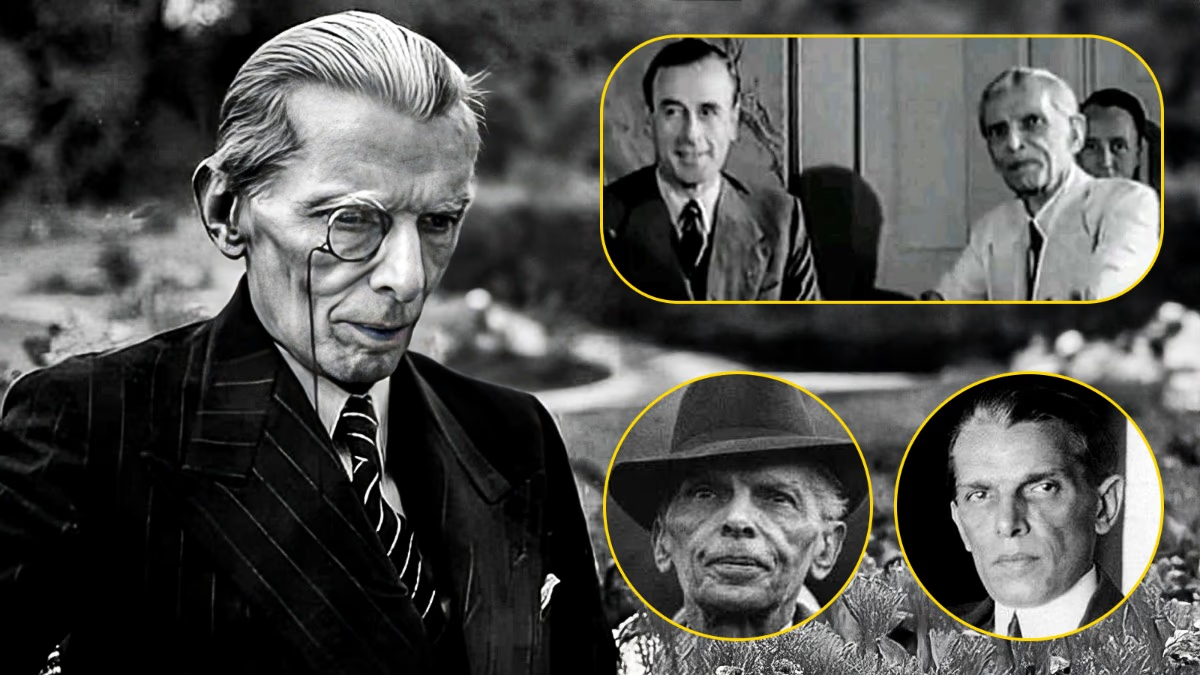Dharavi is part of Mumbai's dazzling yet harsh reality. Calling these structures 'homes' might be an exaggeration since families of seven or eight live in spaces as small as 10x10 feet. Basic amenities barely brush this area, leading to a significantly lower average life expectancy of 60 years, ten years less than the national average. Despite this, Dharavi never sleeps; here, machines whirr, needles race, and hammers ring through the night.
Asia's Largest Slum
Housing over eight to ten lakh people within over 600 acres, Dharavi stands as one of the world's most densely populated areas. Dubbed as Asia's largest slum, it’s centrally located in Mumbai and fondly referred to as 'Mini India' because of its diverse migrant population from across the country. Dharavi is not merely a settlement; it is Mumbai's pulse.
A plan is underway to transform Dharavi's slums into a modern city. The Maharashtra government has collaborated with the Adani Group, sanctioning a master plan for Dharavi's redevelopment valued at ₹95,790 crores. The project aims to transform Dharavi into a modern urban region by January 2032, despite some controversies and concerns among residents.
History of Dharavi
Dharavi emerged around the 1880s, when India was under British rule. The British established it to relocate industries away from central Mumbai, attracting laborers from across the nation. What we know today as Mumbai was a cluster of seven islands under Portuguese rule until the 17th century. After Princess Catherine de Braganza married British monarch Charles II, these islands were transferred as part of her dowry to the British.
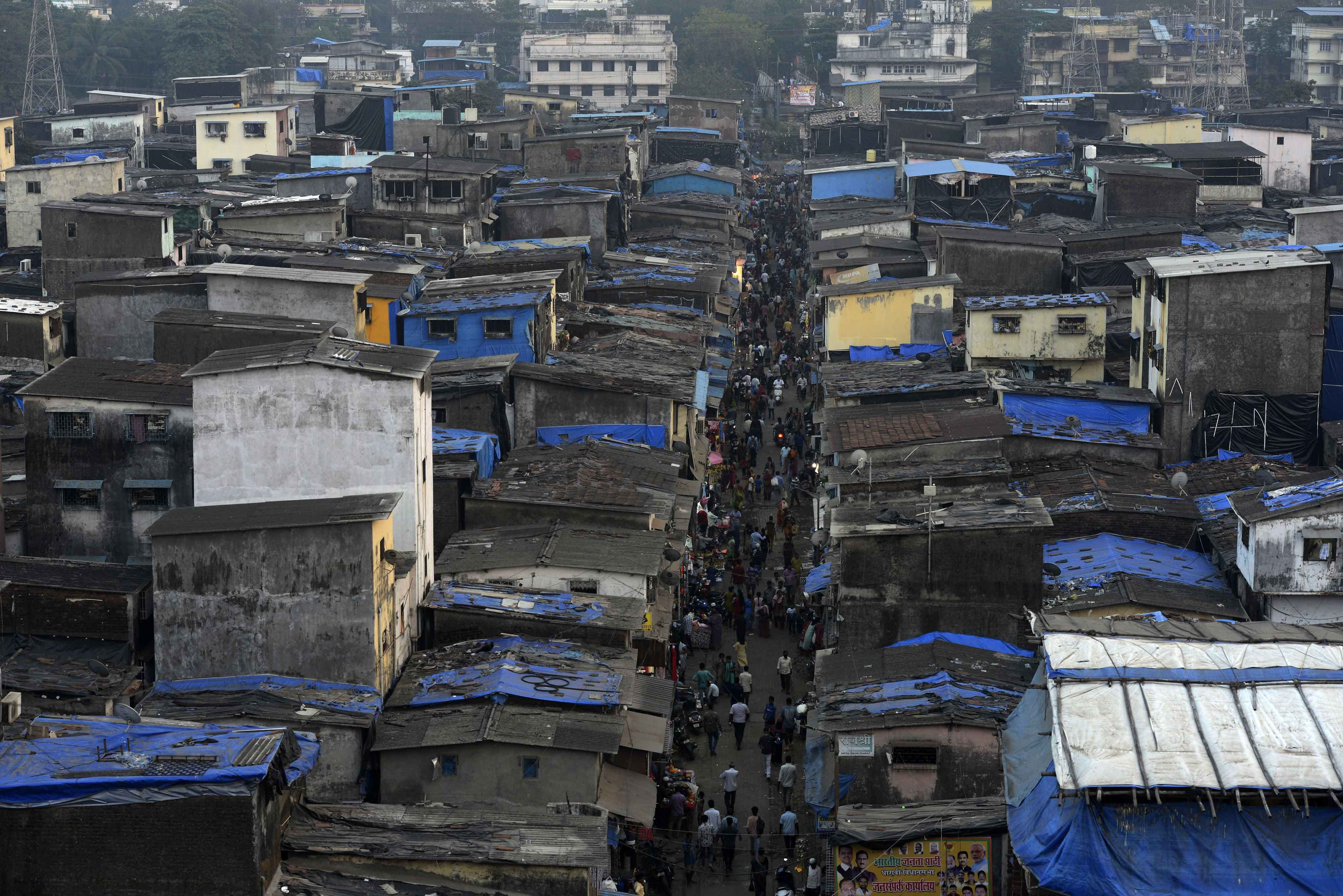
Source: aajtak
Bombay, as Mumbai was formerly known, consisted of mostly fishing islands leased to the East India Company to facilitate trade. Traveling between these islands was difficult due to marshy and densely forested areas. Scarcity of land pushed people to innovate, and by the early 20th century, Dharavi became the heart of leather production—a status it still holds today as an industrial powerhouse.
Early Settlers: The Fishermen
The East India Company connected the islands by building causeways, starting with one between Mahim and Sion in 1708. Adjacent to this, the Dharavi settlement took shape along loose marshy grounds that soon housed the Koli fisherfolk. Their modest settlement at Koliwada remains today.
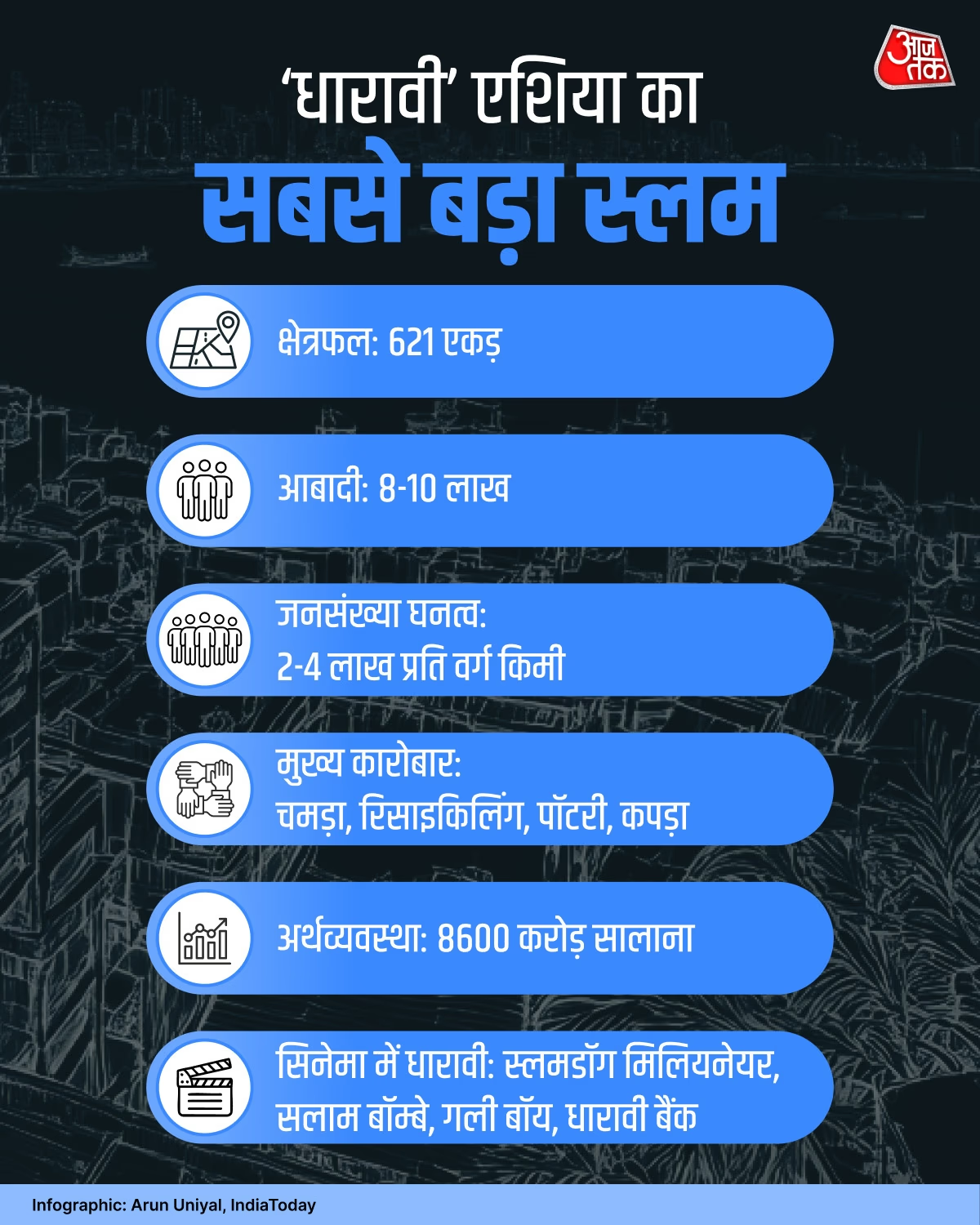
Source: aajtak
In 19th-century Bombay, the municipal corporation incorporated Dharavi, which grew with India's expanding trade capital. Economic demands saw trades like leather, pottery, and textiles relocate to Dharavi, often defined by its malodorous tannery industry.
The Rise of Small Industries
Leather tanneries attracted Tamil artisans considered social outcasts, who established their colony. Potters from Gujarat joined in, creating what remains the ‘Kumbharwada,’ or pottery enclave.
Ironically, the crowding in Dharavi offered what Mumbai couldn't—cheap land and available jobs. This influx continued through the 20th century, with Tamil leather workers and Gujarati potters at the forefront followed by embroidery artisans from Uttar Pradesh, laying the foundation for its vibrant readymade clothing industry.
A Haven for Migrants
Post-1947 independence and subsequent partition brought Hindu refugees from Pakistan seeking refuge in Mumbai—many settling in Dharavi. Waves of migrants continued from across India, drawn by opportunities in Mumbai's burgeoning economy.
By the 1970s, rural Maharashtra saw devastating droughts, forcing farmers and workers to Dharavi's embrace. Simultaneously, migrants from Bihar and Uttar Pradesh sought employment in Mumbai, driving Dharavi's growth simultaneously with rising urban challenges.
Transformation and Challenges
As more migrants flowed in, Dharavi's land disappeared under a chaotic expanse of shacks. Settlers exploited every available patch, building homes and spreading without planning, prompting new challenges.
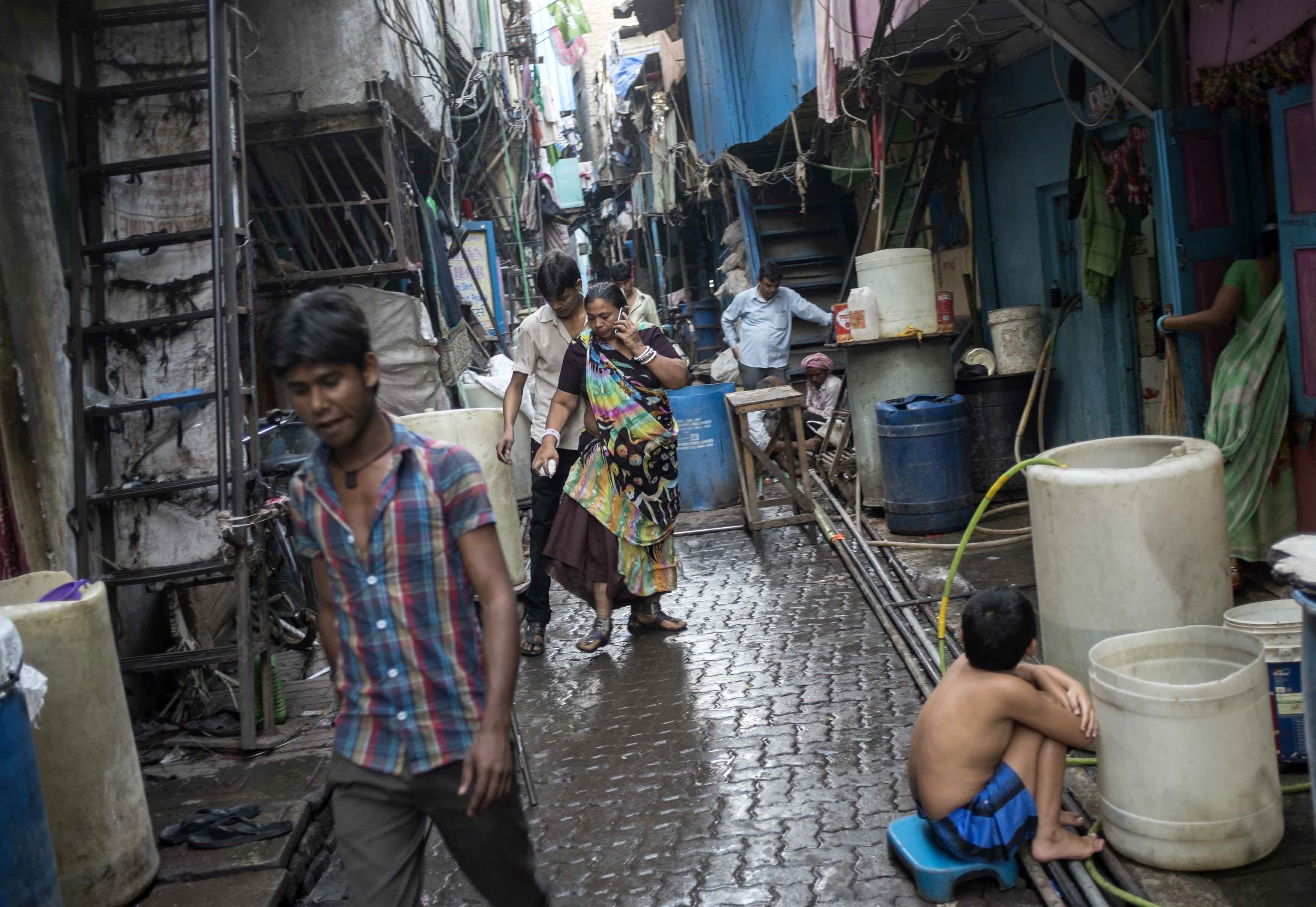
Source: aajtak
Outsiders might see Dharavi as chaotic, but for its residents, overcrowding is the biggest hurdle. While Mumbai's average density is around 24,000 per square kilometer, Dharavi boasts figures four times higher. In certain pockets, it peaks at 400,000 people per square kilometer.
Narrow Alleys and Water Scarcity
In Dharavi, alleyways are so narrow that two people can barely pass. Many such pathways rarely see sunlight as basic services diminish. Utilities like roads, drainage, and cleanliness are almost nonexistent, turning streets into sewers come monsoon. Water supply is scarce; queues form at communal taps for scarce resources. Essential chores spill into public spaces due to lack of infrastructure.
Sanitation poses significant challenges. On average, 500 people must share a single toilet, often resorting to public facilities or open sewers. Such conditions directly impact health, with diseases like cholera, tuberculosis, and typhoid prevalently stalking its residents.
Economic Impact
This environment reduces life expectancy below India's 70-year average. Here thrives a hive of economic activity centered on survival.
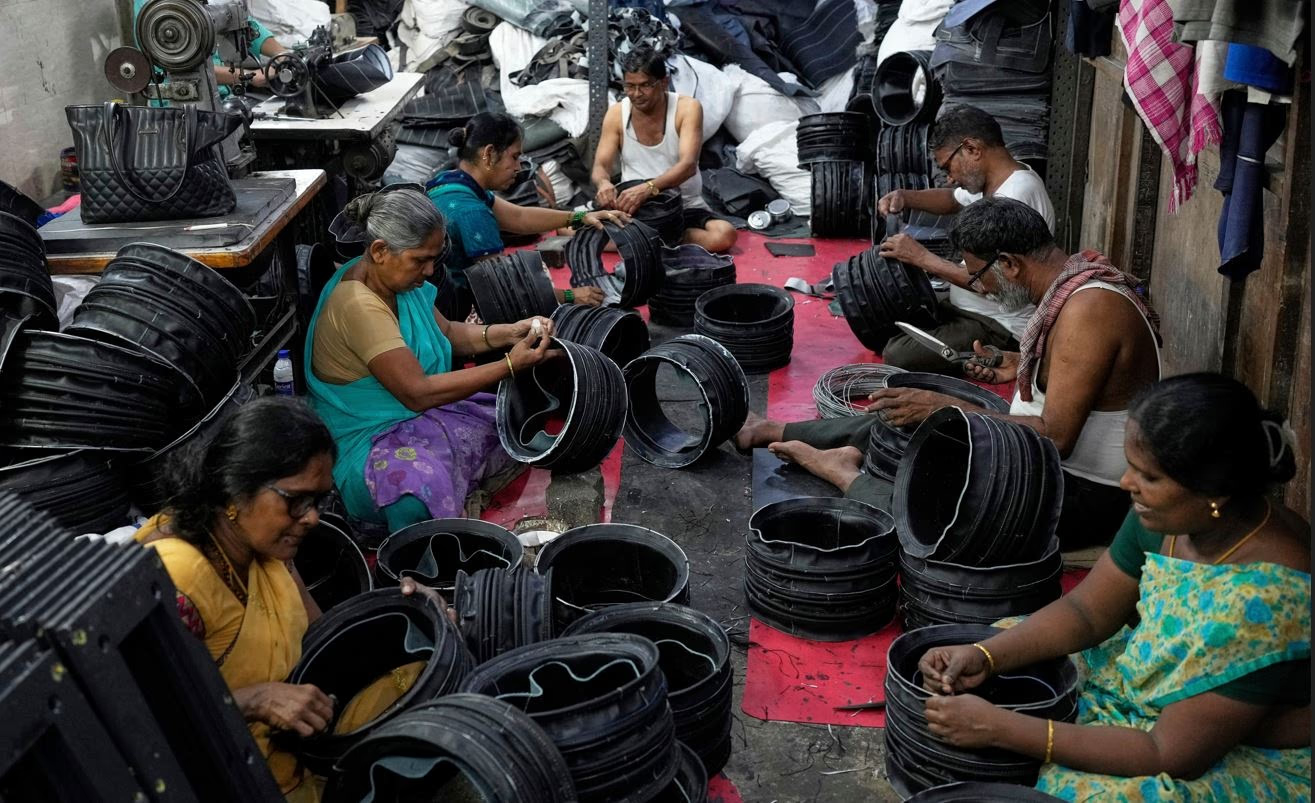
Source: aajtak
Dharavi hosts over 5,000 businesses and 15,000 small workshops powering its economy, producing goods often within homes. Notably, Dharavi is renowned for its leather products, with a proprietary brand '90 Feet' known for quality jackets and accessories.
Annual Turnover of ₹8600 Crores
Potters at Kumbharwada craft earthenware that light homes during Diwali, continuing a generational tradition. Artisans from UP opened tailoring businesses leading to the readymade clothing boom, with garments exported globally.
Dharavi’s prowess in recycling makes it India's recycling hub, processing 60% of Mumbai's plastic waste. Its annual turnover exceeds a billion dollars, employing up to 250,000 people.
Looking ahead, what future will Dharavi see? It’s become Mumbai's heart, evolving from an unwelcome outpost to real estate gold under the Dharavi Redevelopment Project.
What is the Dharavi Redevelopment Project?
Now in Adani Group's hands, the project was acquired in November 2022 for ₹5069 crores. The Maharashtra government entered a venture with Adani, forming Navbharat Mega Developers Pvt Ltd. (NMDPL) responsible for the redevelopment. Adani's 80% stake aligns with the government’s vision to elevate Mumbai, removing slums citywide.
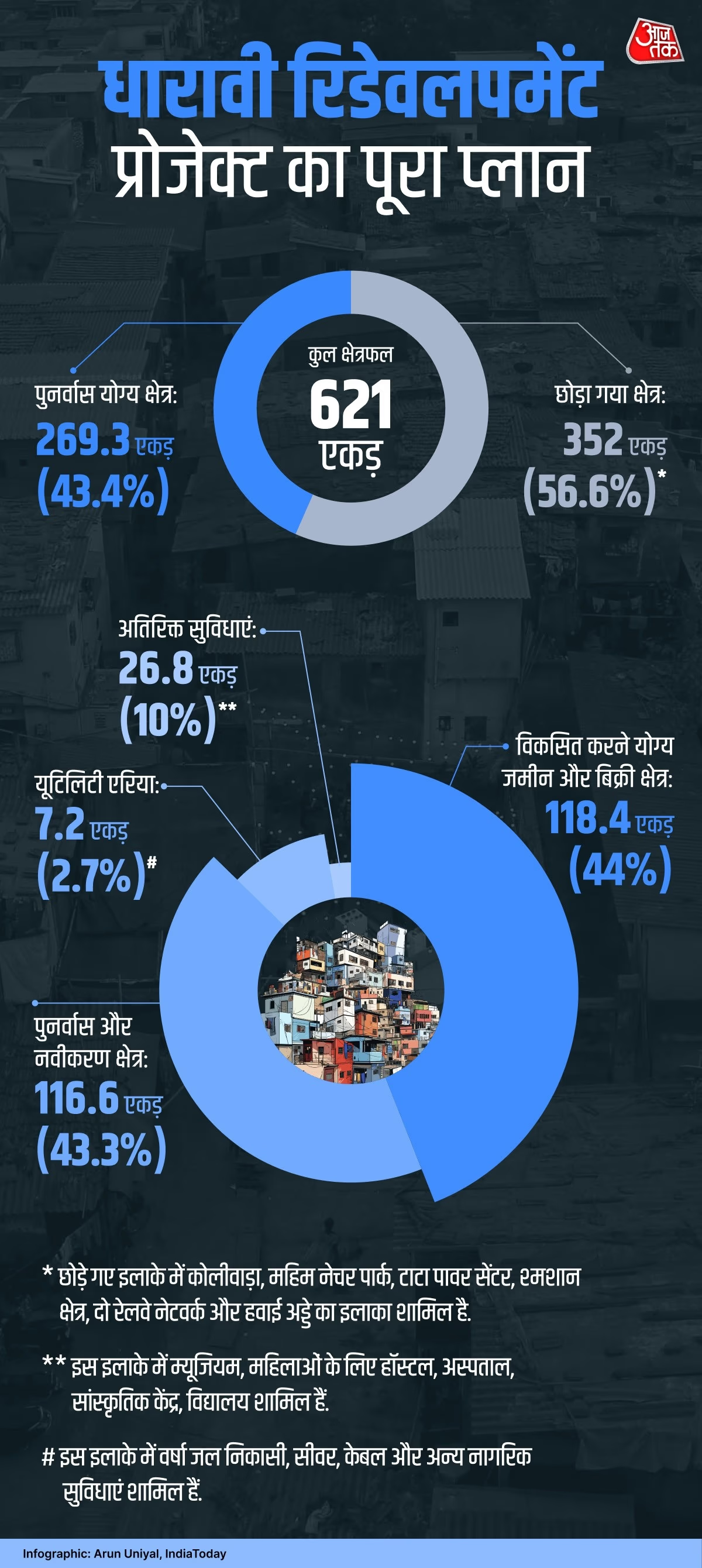
Source: aajtak
The redevelopment will affect 270 acres of Dharavi's 621-acre land, converting parts into flats, shops, and factories with additional acres for open market deals. A significant 352 acres won’t undergo redevelopment, housing parks and airports.
The master plan includes green spaces, community sports grounds, museum spots, hostels, hospitals, cultural centers, and education infrastructure across 25 acres. Project costs land between ₹2.5 to 3 lakh crores, including ₹25,000 crores for rehabilitation units. Yet, qualifying for flats remains contentious.
Conditions for Rehabilitation Flats
According to Maharashtra's slum law, eligible residents receive a 350 square feet flat in Dharavi, regardless of their prior number of dwellings, if they established residency before January 1, 2000. Residents from 2000 to 2011 qualify for 300 square feet flats outside Dharavi, costing ₹2.5 lakhs. Post-2011 residents are deemed ineligible but may rent flats, gaining ownership after 12 years. For provision, 256 acres in Mumbai’s eastern suburbs are allocated to NMDPL.
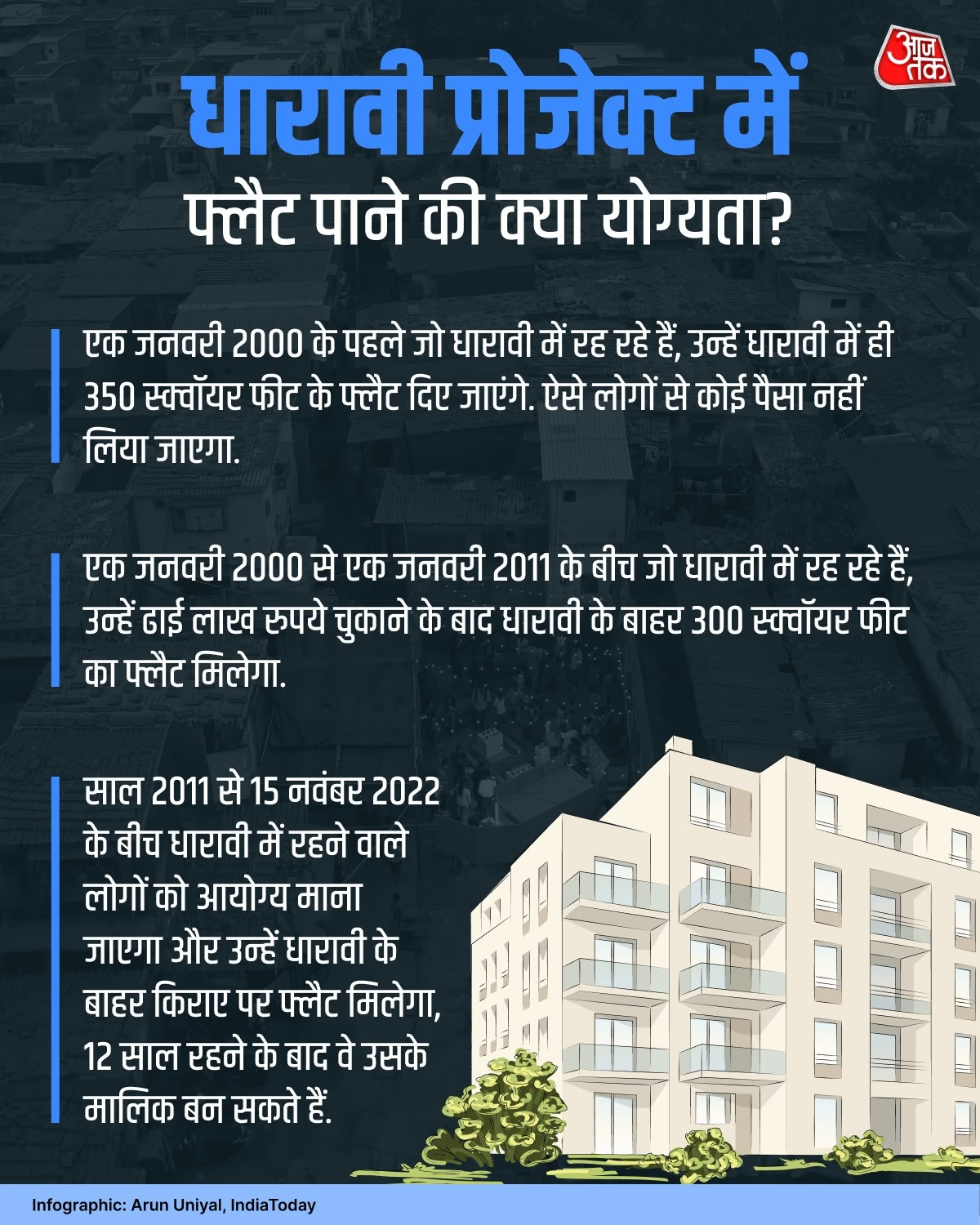
Source: aajtak
NMDPL has 7 years to build Dharavi residents’ homes and 17 years to complete the project. Masterfully designed by architect Hafeez Contractor, the project began after the government purchased rail land.
Concerns and Questions from Dharavi Residents
Among Dharavi's populace, concerns swirl: who qualifies for flats, those left off lists, potential job losses? Dharavi isn't just homes; it provides work for many. Losing or relocating enterprises weighs heavily, potentially displacing thousands. Advocates argue that redevelopment prioritizes builder profit over community welfare, fueling protests demanding job-conscious redevelopment.
Politics Around the Project
Political debate swirls around redevelopment. Politicians like Congress MP Rahul Gandhi and Shiv Sena's Uddhav Thackeray criticize the government's deal with Adani, promising policy reversions upon gaining power. Rahul met leather workers in Dharavi, voicing support for change.
Maharashtra's Chief Minister, Devendra Fadnavis, insists the project benefits residents, offering homes even to those deemed unqualified by existing standards. Critics argue opposition comes mainly from large warehouse owners, while general Dharavi residents desire to escape slum life.
The Dharavi redevelopment issue is monumental. If the Adani Group succeeds alongside Maharashtra's government, it promises transformative impacts, underpinning thousands of lives. Still, addressing stakeholders' concerns remains crucial to safeguarding livelihoods.
Dharavi on the Silver Screen
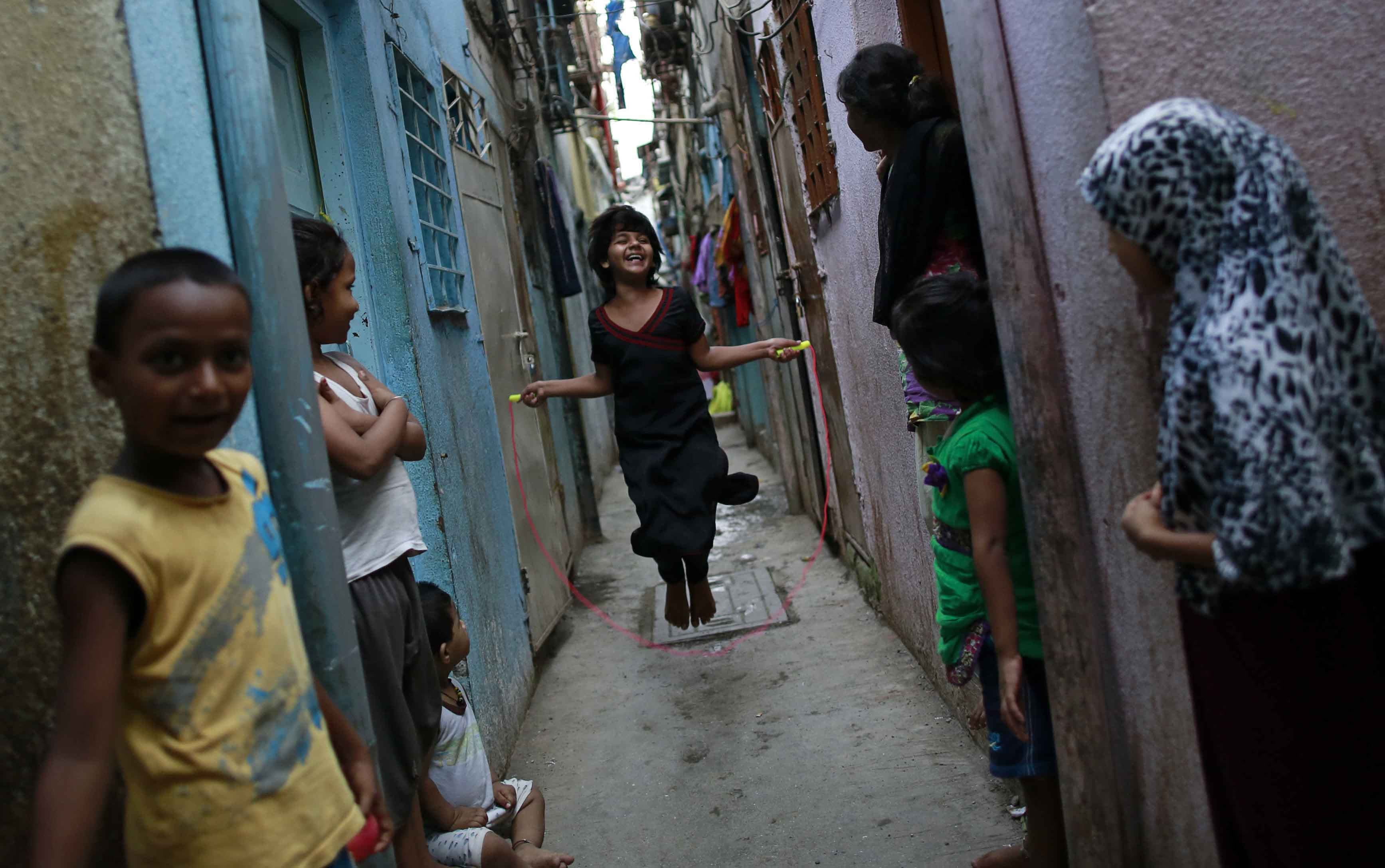
Source: aajtak
Dharavi's narrative has captivated cinema too. The Oscar-winning 'Slumdog Millionaire' won eight Academy Awards in 2009. Its iconic 'Jai Ho' anthem and storyline revolved around a slum child succeeding on 'Who Wants to Be a Millionaire?' showcasing slum realities embroiled in corruption.
In contrast, the series 'Dharavi Bank' ventures into crime, starring Suniel Shetty as gangster Thalaivan, who reigns over Dharavi. The plot pits him against an ambitious officer amid political intrigue.
Ranveer Becomes 'Gully Boy'
Films like 'Gully Boy' tell Dharavi’s story from a different angle. Directed by Zoya Akhtar, this musical film revolves around Murad, a young rapper played by Ranveer Singh, defying social odds through his art. Officially India's Oscar entry, it highlights the vibrancy of Dharavi despite its challenges.
'Kaala,' featuring Rajinikanth, exposes gang-true struggles, with protagonist Karikalan, a protector of slum residents. Released in 2018, it also featured Huma Qureshi and Nana Patekar. Cult classics like 'Salaam Bombay' similarly capture Dharavi's essence.



